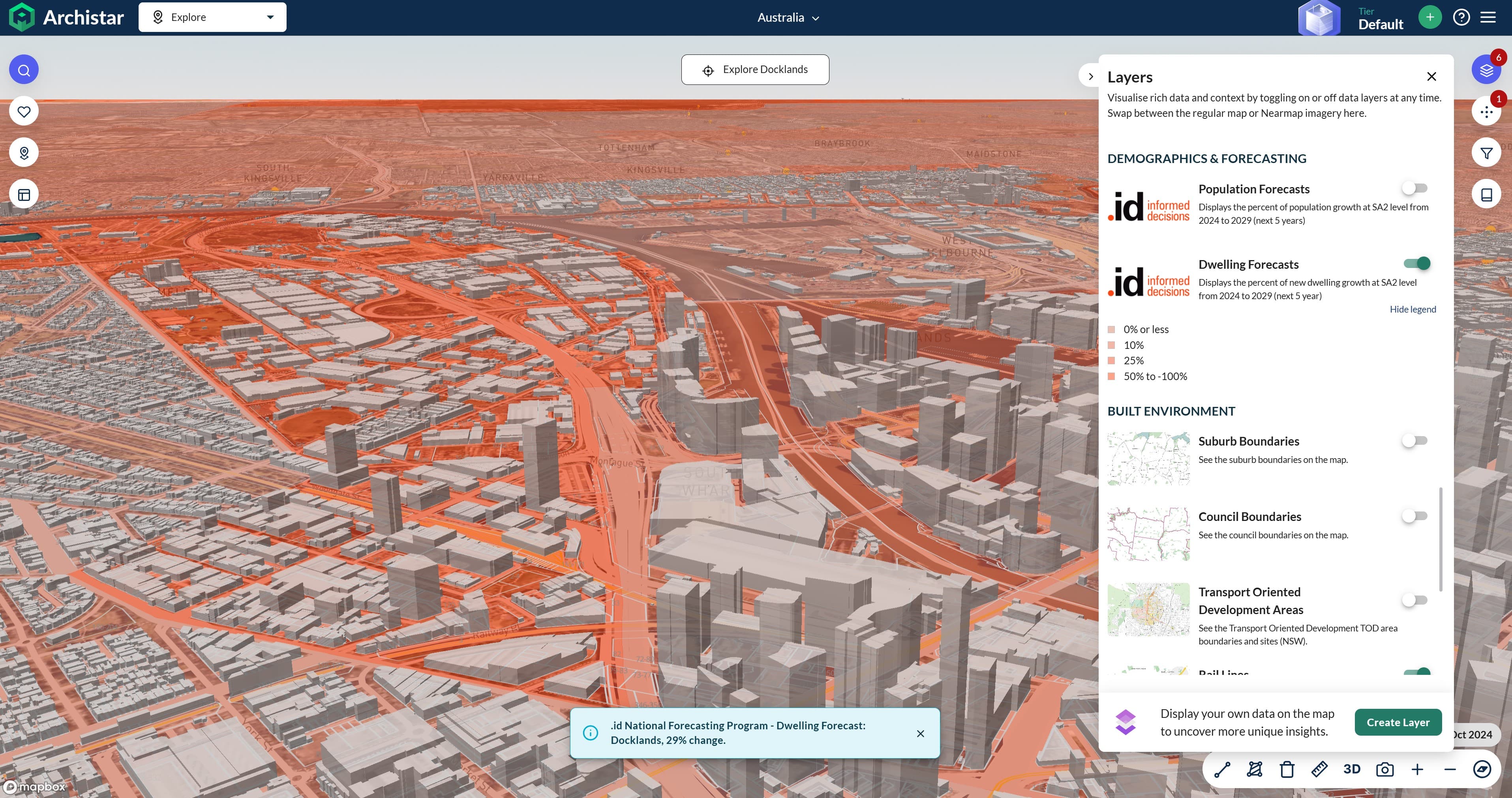Population forecasts are often referred to as ‘projections’. This is understandable, as they are ‘projecting’ something into the future. But the term projection implies that it is a continuation of current trends.
At .id, we prefer the term ‘forecast’ because what we are doing is much more than just projecting a trend. Our population forecast tool is called ‘forecast.id’.
Forecasts vs projections: What are the differences?
A population projection in its most simplistic form says something like: ‘Our population has grown at 3% p.a. for the past 10 years. We project it will continue to grow at this rate’. And you would have future population numbers based on this. It can be more sophisticated than this. A projection can vary the current levels of overseas migration, births and deaths to provide differing scenarios, but in the end is still a prediction based on a trend.
Our population forecasts, on the other hand are fundamentally based on ‘first principles’. Based on the number and type of dwellings anticipated for the area, assumptions about land supply, age-specific migration rates and local birth and death rates, we look at the likely outcomes of future population, age and household type characteristics of the area. These are still ASSUMPTIONS and can change, but they are not PROJECTIONS of a current trend. Because our forecasts are ‘bottom up’ they take far more notice of local characteristics as well.
What this may mean is the trend could be strong growth, but if the area is about to run out of land, or is subject to a change in housing policy, population could stabilise and even decline. This is all part of the cyclical nature of forecasting.
A good analogy is a weather forecast. A ‘weather projection’ would be saying “Well yesterday it was 22 degrees and today it was 25, so tomorrow will be 28 and the next day 31”. Or even, “Past November 13ths have had an average of 22.7 degrees. Based on the fact that we are in a global warming trend, this November 13th should be 22.9 degrees”.
Weather forecasts don’t work this way. Modern weather forecasting looks at satellite photos showing current global temperature, cloud cover, etc. and vast numbers of measurements of air movements, temperature and rainfall. Modern weather forecasts model the actual weather patterns, like high pressure systems and cold fronts, to get an accurate idea of the future. And though often maligned, I think weather forecasts these days are usually pretty accurate.
There is another way in which our population forecasts are like weather forecasts. We do our forecasts for 25 years into the future. But we recognise that we’re likely to be less accurate that far out than in the next few years. Over that time, macro trends can have more of an impact too. Weather forecasts are usually out 8-10 days, but they are revised for that future day every day, until the day before, at which point it becomes pretty accurate.
Our population forecasts, similarly, are designed to be reviewed at least every 5 years, for most areas every 2 years, and in some cases every year. This keeps them fresh and up-to-date and ensures that you’ve always got the information based on the best available assumptions.
How often to review them? Most of our forecasts receive the full 5-yearly Census review and at least one ‘inter-censal’ update to revise the dwelling assumptions. However for very high growth areas, like suburban fringe locations in growth corridors, and inner-city areas with a lot of apartment developments, it can be worth doing more frequent updates, as much as annually if needed.











